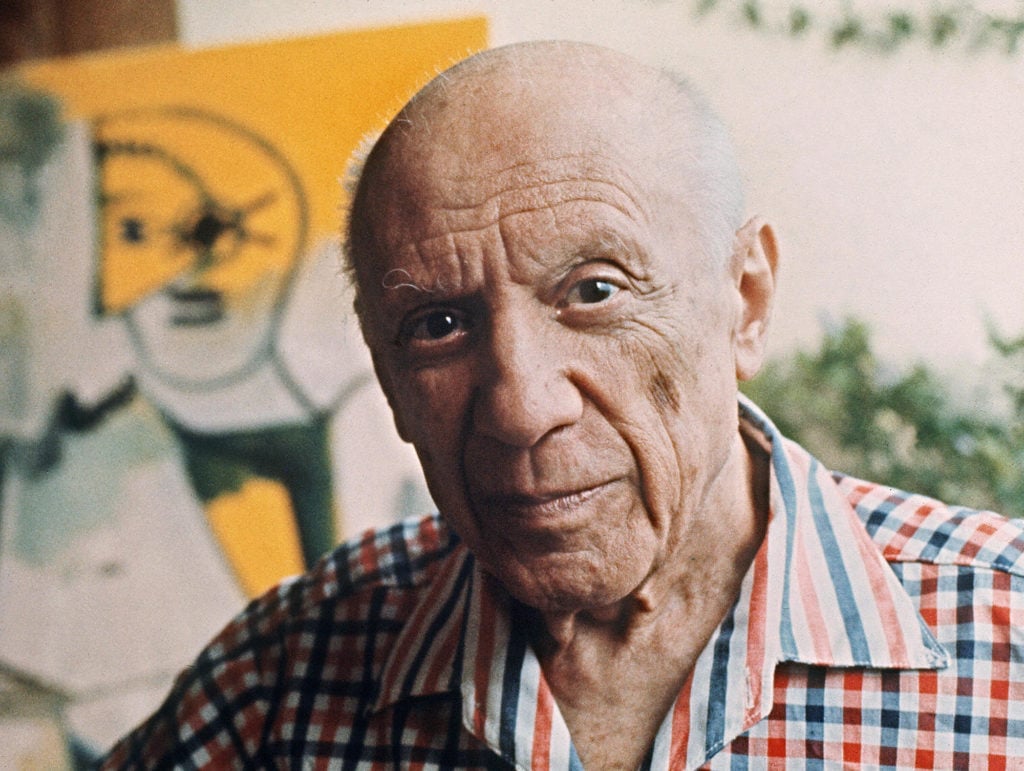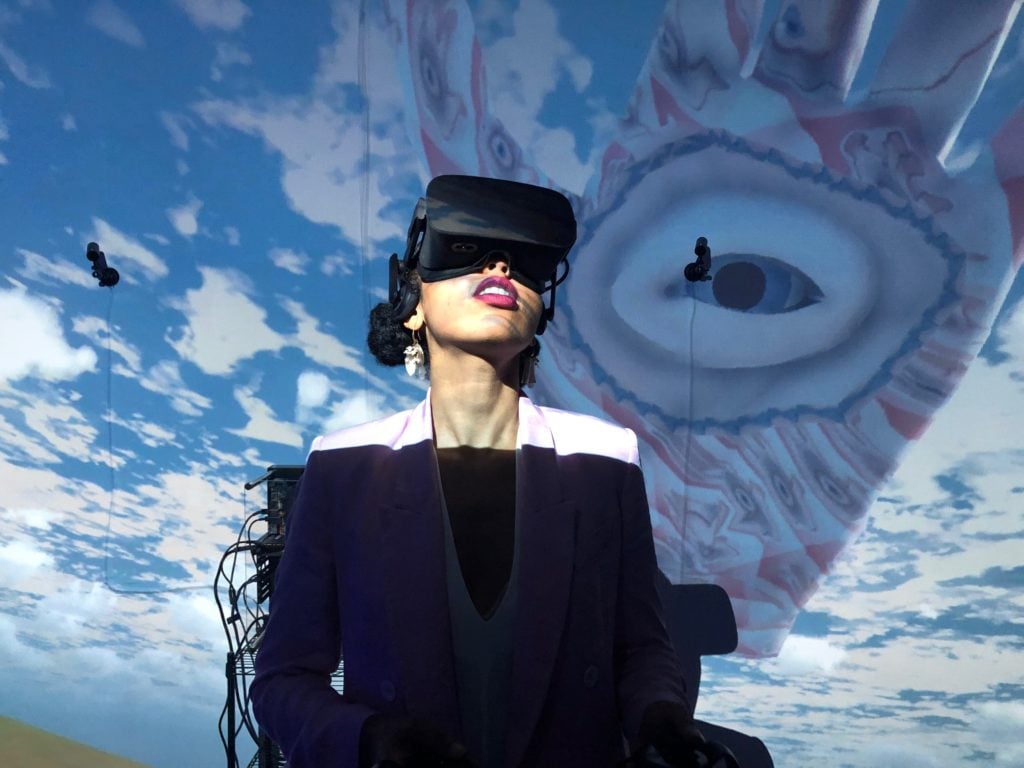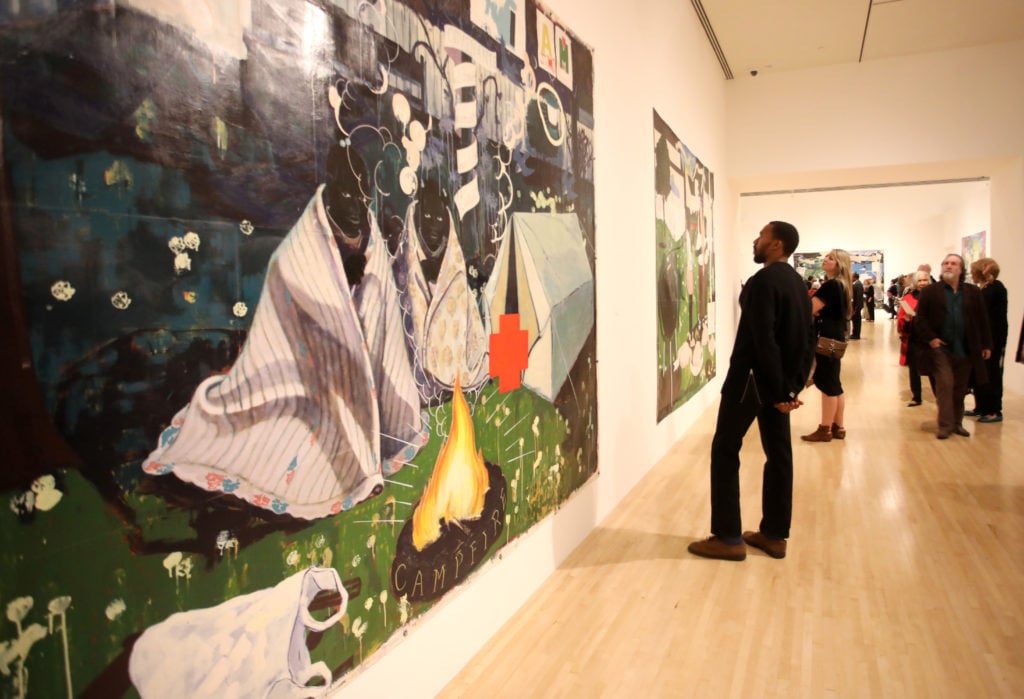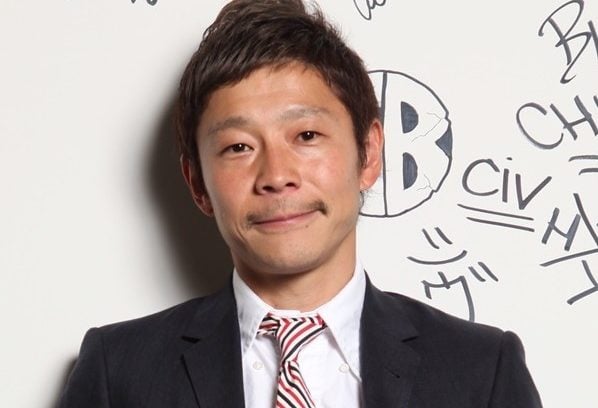Every Monday morning, artnet News brings you The Gray Market. The column decodes important stories from the previous week—and offers unparalleled insight into the inner workings of the art industry in the process.
This week, stories that remind us that it’s not where you’ve been, but where you’re going that counts…
MOONSTRUCK
On Tuesday, the New York Times reported that Yusaku Maezawa, the Japanese billionaire and record-setting Basquiat collector, has reserved space for himself and up to eight artists on what is slated to be the first civilian journey to the moon. Maezawa says that the mission, which is currently scheduled to launch in 2023 via Elon Musk’s SpaceX, will result in a “revolutionary art project” titled “Dear Moon.”
My colleague Sarah Cascone relayed more information about the art angle, including that a video released on the “Dear Moon” website implies Maezawa will select one representative each from a cross-section of creative disciplines. The implication is that a single luminary in each field will be able to return to Earth with insights able to dramatically improve mankind—an idea he alluded to by wondering, “What if Picasso had gone to the moon, or Andy Warhol, or Michael Jackson, or John Lennon, or Coco Chanel?”
As it turns out, we actually have a partial answer to this would-be rhetorical question. In 1969, the New York Times solicited reactions to the original moon landing from an assortment of public figures—including Picasso. His response?
“It means nothing to me. I have no opinion about it, and I don’t care.”

Pablo Picasso: not impressed by your moon travel plans. Pictured here in Mougins, France, in 1971. Photo courtesy RALPH GATTI/AFP/Getty Images.
Now, I’m not naïve enough to suggest that we should always take flamboyant artists (or anyone, for that matter) at their sound bites. But Picasso’s answer reinforces my personal sense that “Dear Moon” is, at best, absurdly frivolous—and at worst, a space-capsule study on how tone-deaf many billionaire art patrons are to the artistic community writ large.
One indisputable fact: Maezawa’s plan amounts to the most ostentatious artist residency in the universe. Although neither he nor Musk would confirm the price tag for their lunar tourism, Cascone notes that one estimate projected a rough cost of $200 million. Subtracting the price of putting his own butt in one of the shuttle seats, this would mean Maezawa could spend about $178 million to send, at most, eight artists on a week-long journey to the moon and back. That’s just over $22 million per artist.
Incidentally, Amanda Petrusich wrote for the New Yorker earlier this year about the recent surge in surreal artist residency opportunities. Some of the lowlights included a converted storefront inside the Mall of America, “the tower of a bridge that crosses a shipping canal,” and a space inside a 47-acre garbage dump. She dead-eyed the depressing reality underlying this trend as follows:
The proliferation of oddball residencies simply reiterates how hysterically difficult it is for contemporary artists who are not born rich to nurture or sustain any sort of creative practice. In the midst of this, a silent room with your name on the door—wherever it is, and regardless of whether it has plumbing or not—becomes a kind of life preserver.
So as of now, Maezawa is likely to blow at least $178 million to give a handful of artists a residency that Picasso essentially considered worthless. Meanwhile, many other artists are so broke that they have been competing with one another for the chance to secure temporary space in locations that include literal trash heaps.
I don’t doubt that Maezawa sincerely wants to spur great artistic leaps, and I admire the fact that he’s willing to put serious cash behind the effort. But he could do exponentially more for art and humanity by budgeting the same cash to pay the rent and living expenses for thousands of underappreciated artists around the globe. Call it “Dear Landlord”—a project funded by a major reality check.
[The New York Times | artnet News]

Mark Farid wearing a virtual reality headset (Images by Freel & Gorse)
Photo via: Vice
THERE’S NO PLACE LIKE HOME
On Wednesday, cultural-sector analytics guru Colleen Dilenschneider shared findings that I’d argue every US arts organization should treat with the same urgency as a tunnel full of escaped convicts emerging in their admin offices. She reports that, over the past seven years, Americans’ preference for staying home has increased by a staggering 20 percent on weeknights and 24 percent on weekends.
Even more sobering, so-called “high-propensity visitors,” or those most likely to attend cultural activities, have actually expressed a slightly stronger preference for staying home than the US average.
Dilenschneider’s data comes from the National Attitudes, Awareness, and Usage Study maintained by her firm, IMPACTS. They believe it is “the largest ongoing study of perceptions and behaviors related to visitor-serving organizations in the US,” tracking over 108,000 American adults. This particular slice of data on the new American Reclusiveness covers the years 2011 through 2017.
Now, Dilenschneider rightly notes that these findings don’t necessarily mean that cultural organizations are doing anything worse than other IRL attractions. The seismic shift over the time period in question no doubt owes to the dramatic increase in access provided by the internet for everything from TV, movies, and video games to food delivery, reading materials, and rich remote interactions with the people you love.
She also locates a silver lining in the data. With more than 90 percent of respondents saying they used some of their nights at home to go online—a finding that is about as unsurprising as bogus condolences at a total jerk’s funeral—Dilenschneider sees ample opportunities for cultural institutions to connect with potential visitors through social media and other digital marketing avenues.

A viewer in VR headset experiencing the Digital Museum of Digital Art (DiMoDA). Image courtesy of the Digital Museum of Digital Art.
She may be right. But I tend to think there’s a larger, more dramatic takeaway here. Technological initiatives have been on the rise at museums around the country for some time now, with developments like the millions-strong digitization of permanent collections and archives, 3-D-printable artworks and artifacts sanctioned by great museums worldwide, and full virtual reality recreations of renowned institutional exhibitions.
However, delivering better arts content through tech is a double-edged sword. The narrower the quality (and price) gap between physical and digital experiences, the less you lose by skipping the old-fashioned museum trip for stay-at-home patronage—or what I’ll call staytronage.
I suspect many cultural organizations are already struggling with the staytronage paradox (and for good reason). Meanwhile, artists and entrepreneurs more embedded in cutting-edge tech are forging ahead with new digital models unburdened by the downsides of IRL infrastructure. Just consider the Kremer Museum, a fantastical VR institution featuring the roughly 75 Old Masters actually owned by its namesake collectors IRL, and the even more radical Digital Museum of Digital Art (DiMoDA), which commissions and preserves an ongoing program of immersive VR artworks on a pay-what-you-wish basis.
Bottom line: As even staunch supporters of museums give in to creature comforts in the digital age, there’s only so much that art organizations can do to lure people back into the physical fold. That doesn’t mean they shouldn’t try. But it also means they should consider more dramatic plans for remote engagement, too. Because, to remix the old urban legend about a babysitter tracing an escalating series of threatening calls from an unknown location, the change is coming from inside the house.
[Know Your Own Bone]

The Opening of “Kerry James Marshall: Mastry” at MOCA in Los Angeles, California. Photo by Rachel Murray/Getty Images for MOCA.
PERIPHERAL VISION
Last but certainly not least this week, my colleague Julia Halperin and In Other Words’s Charlotte Burns released a multi-story study on the representation of African American artists in 30 prominent US museums since 2008. And their findings complicate the recent narrative of an industry-wide correction in both quantitative and qualitative ways.
The study’s marquee results can be read as either a cool, refreshing drink or a tepid wet blanket. For optimists, consider that, in 2017, “the number of solo and thematic exhibitions focusing on the work of African American artists jumped almost 66 percent (to 63 shows, from 38 in 2016).” And in 2018 to date, “the combined number of works by African American artists acquired by museums (439 total, so far) is on track to become a 10-year record.”
However, this recent wave of change slams against a daunting breakwall of complacency. Halperin and Burns relay that, “since 2008, just 2.4 percent of all acquisitions and gifts and 7.6 percent of all exhibitions at 30 prominent American museums have been of work by African American artists.”
In short, the museum sector is moving in the right direction, but many miles still separate it from racial equity. Several of Halperin and Burns’s sources also underscored this notion by suggesting that institutional representation of other demographics, such as Latinx or Native American artists, is likely even more distressing.
Yet their reporting also illuminates the often-overlooked gulf between the behavior of elite institutions and the behavior of all institutions. Halperin and Burns relay that regional and university museums, including those at historically black schools, have long prioritized collecting and exhibiting works by black artists. The Pennsylvania Academy of the Fine Arts, for example, has acquired 393 such pieces since 2008, bringing it close to national-leader status in this category.
It’s an old adage that there is no single “art world”—that this default term disguises the reality of a complex ecosystem composed of many interlocking environments that influence one another in myriad ways. But for those of us living and working in art-industry capitals, there’s an operating assumption that these capitals house the field’s most progressive views, policies, and developments.
This study proves once again that that assumption is flawed. Sometimes the best practices emerge from the niches, not the main halls. And those of us living and working in the industry’s traditional hubs should do our best to stay curious about, respectful of, and engaged with the rest of the art world. Because there’s always something there we can learn.
[artnet News | In Other Words]
That’s all for this week. ‘Til next time, remember: Changing your scenery can be one of the best ways to start changing your mind.













